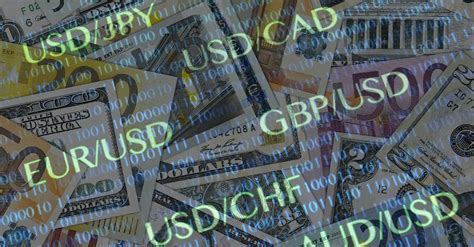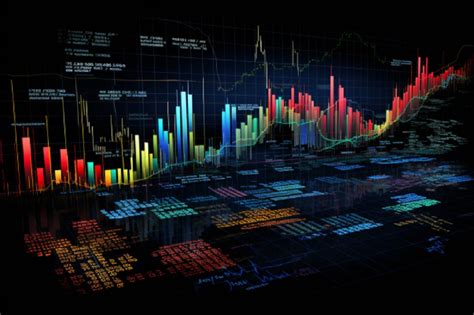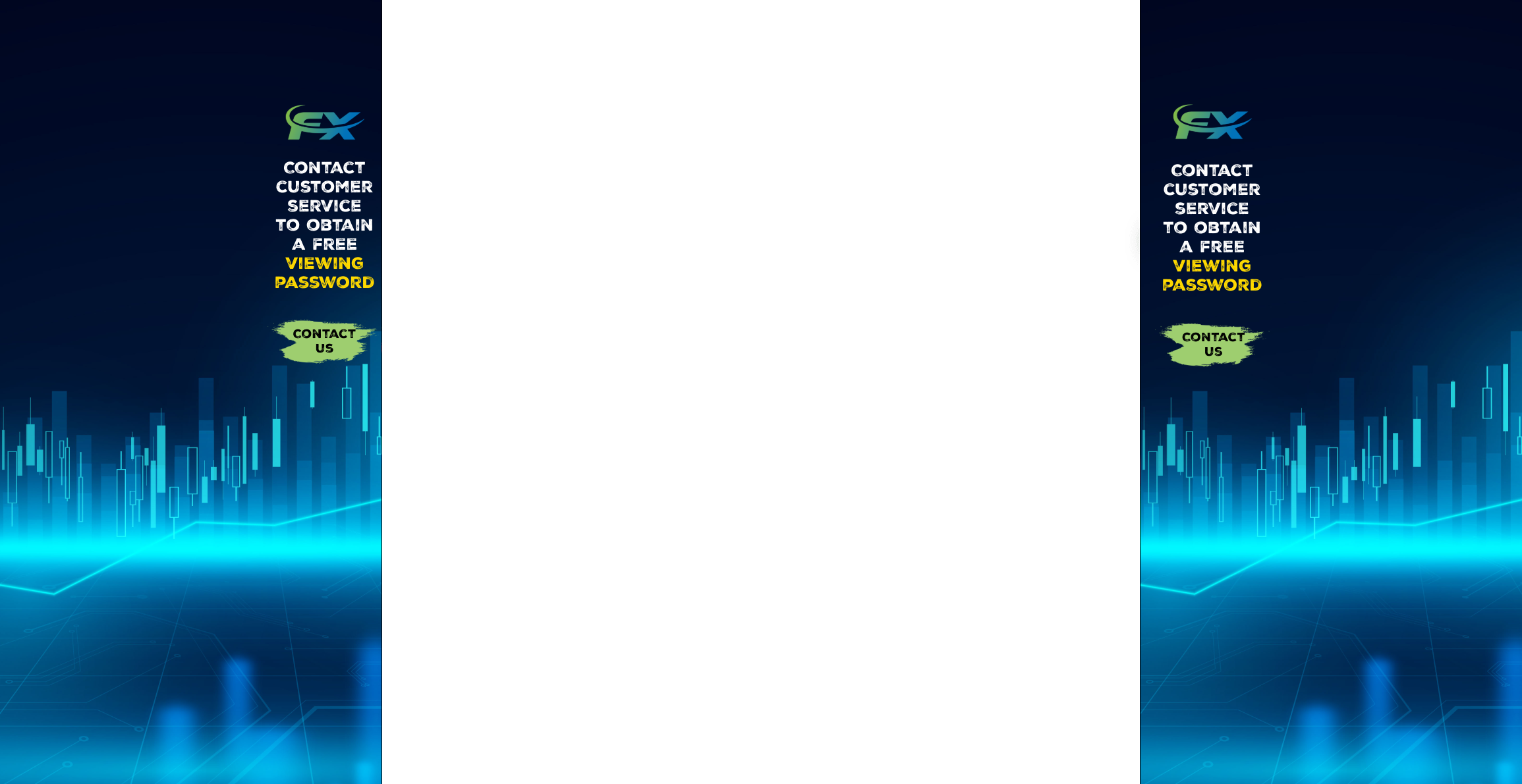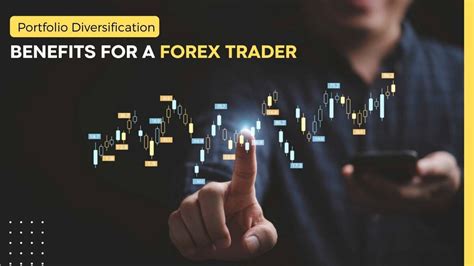Forex trading offers an exciting opportunity to participate in the global financial markets. How to forex trade is a question many new traders ask as they explore this dynamic field. By understanding key concepts like leverage, margin, and risk management, you can build a solid foundation for making informed decisions in the market. These elements play a crucial role in how trades are executed, the potential for profit, and the risks involved. Mastering them is essential for anyone aiming to succeed in the world of Forex.
Getting Started with Forex Trading
The world of Forex trading can seem overwhelming, but with a solid understanding of its core elements, it’s possible to start your trading journey with confidence. How to forex trade successfully involves understanding the fundamental concepts, the market mechanics, and the tools you’ll use to make informed decisions.
Introduction to Forex Trading
Forex trading involves the buying and selling of currency pairs in a global market. It’s one of the most liquid financial markets, attracting traders due to its accessibility, 24-hour operation, and the potential for high returns. With a daily trading volume of over $6 trillion, Forex allows traders to profit from fluctuations in exchange rates between different currencies, such as EURUSD or GBPUSD.

Understanding Currency Pairs
What are currency pairs? Currency pairs represent the price of one currency in terms of another. For example, if you trade USDJPY, you're buying US dollars and selling Japanese yen.
Major vs Minor currency pairs: Major currency pairs like EURUSD and GBPUSD are the most traded, while minor pairs like NZDUSD are less liquid.
Reading currency pairs: The first currency in the pair is called the base currency, and the second is the quote currency. A value of 1.2000 in EURUSD means 1 Euro is worth 1.20 USD.
Choosing Your Forex Broker
Reputation: Choose a broker with a solid reputation and positive reviews.
Regulation: Ensure the broker is regulated by a trusted authority such as the FCA (Financial Conduct Authority).
Trading platforms: Brokers often provide platforms like MetaTrader 4 and MetaTrader 5, offering tools such as Moving Average and RSI indicators.
Account types: Some brokers offer demo accounts for practice, while others have specialized accounts for scalping or day trading strategies.
Basic Forex Trading Terminology
Pip: A pip is the smallest price movement in the Forex market. For example, in USDJPY, a movement from 110.10 to 110.11 represents a 1 pip change.
Lot: A lot represents the size of your trade. A standard lot is 100,000 units of the base currency.
Spread: The difference between the buying and selling price of a currency pair. Brokers earn from this spread.
Leverage: Leverage allows you to control a larger position with a smaller amount of capital. However, it also increases risk.
Stop loss and take profit: Essential risk management tools used to limit losses or lock in profits.
Setting Up Your Trading Account
Choosing a platform: Start by selecting a platform like cTrader or TradingView.
Demo vs live trading: It’s essential to practice on a demo account before going live to gain experience.
Depositing funds: Most brokers allow deposits via credit cards, bank transfers, or e-wallets like PayPal.
Risk management tools: Set stop losses and take profits to safeguard your capital.
Account verification: Complete identity verification to ensure the security of your account.
Leverage settings: Decide on the leverage ratio that aligns with your risk tolerance.
Mastering Forex Trading Strategies
To become a successful trader, mastering the right strategies is essential. Whether you prefer short-term gains or longer, more calculated moves, understanding the various approaches to how to forex trade can improve your overall performance and decision-making.
Day Trading vs. Swing Trading
Day trading: This strategy involves opening and closing positions within a single trading day. Traders capitalize on small market fluctuations during the day.
Swing trading: Swing traders hold positions for several days or weeks, aiming to profit from medium-term trends.
Time commitment: Day trading requires full-time commitment, while swing trading allows more flexibility with a part-time approach.
Risk level: Day trading can be riskier due to the rapid pace, while swing trading may offer a more moderate risk exposure, depending on the market’s behavior.
Trend Following and Mean Reversion
In Forex, identifying trends and understanding when to go against the grain are crucial skills.
Trend Following
What is it? Trend following aims to profit by entering a trade when a trend is identified and riding it until signs of reversal appear.
Tools to use: Moving Average and MACD are commonly used to spot trends.
Best pairs: EURUSD and GBPUSD are ideal for trend-following strategies due to their liquidity and volatility.
Mean Reversion
What is it? This strategy assumes that after a period of extreme movement, the price will return to a more "average" level.
When to use: Often used in sideways or consolidating markets where prices don’t trend.
Scalping in Forex
Scalping is a high-frequency trading strategy that involves making many trades within a short time frame to capture small price movements.
What is scalping? A scalper aims to make profits from small price changes by executing numerous trades throughout the day.
Timeframe: Typically operates on the M1, M5, or M15 charts.
Risks: Scalping can be highly stressful and risky due to the constant market changes.
Best pairs: USDJPY and EURGBP are popular among scalpers due to their liquidity and low spreads.
| Scalping Tips | Best Timeframes | Recommended Indicators |
|---|---|---|
| Focus on tight spreads | M1, M5, M15 | RSI, Stochastic Oscillator |
| Execute fast orders | 15-30 minute trades | Bollinger Bands, Moving Average |
| Avoid high volatility | Choose low spread pairs | Support and Resistance levels |
News Trading and Economic Events
Understanding how economic events influence the market can help traders make informed decisions.
Using the economic calendar: Track scheduled news events like GDP releases, interest rate decisions, and job reports that impact currency prices.
Impact of news: Major events, such as the US Federal Reserve’s interest rate announcements, can cause significant price volatility, especially in pairs like EURUSD and USDJPY.
How to trade news: Traders often position themselves before an event (pre-positioning) or react after the news release.
This collection of strategies is designed to provide various approaches to how to forex trade, each offering a unique way to capitalize on the market. Whether you’re using a fast-paced scalping method or taking a longer view with trend-following, knowing when and how to apply these strategies will make you more adept at handling the complexities of Forex.
Understanding Leverage and Margin in Forex Trading
Leverage and margin are essential tools in Forex trading, enabling traders to amplify potential profits while also introducing significant risks. Grasping these concepts is crucial for responsible trading and risk management.

What is Leverage?
Leverage in Forex trading allows you to control a large position with a relatively small amount of capital. It is essentially a loan provided by your broker to increase your buying power.
Leverage ratio: Common leverage ratios in Forex are 50:1, 100:1, and 200:1. For instance, with 100:1 leverage, you can control a $100,000 position with just $1,000 in margin.
Function: Leverage magnifies both potential profits and losses. While it increases the ability to make bigger trades, it also increases the risk of significant losses.
Example: With a leverage of 50:1, a 1% change in the price of a currency pair could result in a 50% return or loss, depending on your position.
Margin Requirements Explained
Margin is the amount of money you need to deposit to open a position in Forex. This is typically a fraction of the total value of the position.
Initial margin: The amount required to open a position. For example, with 100:1 leverage, you need just 1% of the trade size in margin.
Maintenance margin: The minimum amount of equity required to maintain your position. If your equity falls below this threshold, you may face a margin call.
How to calculate margin:
<step 1> Determine the position size (e.g., 1 standard lot = 100,000 units).
<step 2> Multiply the position size by the exchange rate (e.g., EUR/USD).
<step 3> Divide the result by the leverage ratio to determine the margin requirement.
The Risks of High Leverage
While leverage offers traders the potential for higher profits, it also carries a significant risk.
Exaggerated losses: High leverage can cause even small market fluctuations to result in significant losses.
Volatility: Leverage is most dangerous during volatile market conditions, such as during major news events or economic announcements.
Managing risk: Using Stop Loss orders and maintaining strict Risk/Reward Ratios can help mitigate the risk of large losses.
Using Leverage Responsibly
Properly managing leverage is crucial for long-term success in Forex trading.
Start small: Begin with lower leverage to minimize exposure and risk.
Set realistic expectations: Don’t expect to make massive profits overnight. Leverage should be used to enhance, not dictate, your trading strategy.
Risk management tools: Always use Stop Loss and Take Profit orders to protect your account balance from unpredictable market movements.
Calculating Margin Calls
A margin call occurs when your account equity falls below the required margin level, forcing you to either deposit more funds or close positions.
How margin calls work: Brokers monitor your equity relative to your margin level. If it falls too low, they’ll ask you to add more funds to keep your position open.
How to avoid a margin call:
Monitor your account: Keep a close eye on your equity and margin levels.
Use proper position sizing: Avoid over-leveraging your account.
Use Stop Losses: Prevent excessive losses that might lead to a margin call.
| Factors Impacting Margin Call | Impact Level | Management Tips |
|---|---|---|
| High leverage | Very High | Use lower leverage settings |
| Market volatility | High | Stay updated with news |
| Overleveraged positions | High | Reduce position size |
| Lack of risk management strategies | Critical | Set Stop Loss orders |
By understanding the dynamics of leverage, margin, and the associated risks, traders can make more informed decisions and use these tools responsibly to enhance their Forex trading experience.
The Art of Risk Management in Forex Trading
Risk management is the cornerstone of successful Forex trading. It ensures that traders protect their capital while navigating volatile market conditions. Effective strategies like Stop Loss, Position Sizing, and Risk-to-Reward ratios are vital to minimize losses and lock in profits.
Stop Loss and Take Profit Orders
Stop Loss and Take Profit orders are essential tools that help traders manage risk and ensure their profits are secured. These orders automatically close your position at a predetermined price level, helping to limit losses and lock in profits.
Stop Loss:
Protects against significant losses by closing a position once the market moves unfavorably.
Set based on your risk tolerance—typically a percentage of your account balance.
Can be adjusted during trade to reduce potential losses as the market moves in your favor.
Take Profit:
Locks in profits once the market reaches a target price.
Removes emotional decision-making and forces discipline.
Ensures consistent profit-taking without waiting for a reversal.
Example: If you're trading EURUSD and have a position open at 1.1200, setting a stop loss at 1.1150 (50 pips) and a take profit at 1.1300 (100 pips) provides clear exit points.
Position Sizing and Risk Management
Determining the correct position size is a fundamental part of risk management in Forex trading. It ensures that you don't overexpose your account to any single trade.
Calculate risk per trade:
The risk per trade is typically a percentage of your account balance. For example, risking 2% of your balance on each trade.
Account balance and leverage:
Use your leverage and account balance to calculate how much you should risk on a trade.
Position size formula:
<step 1> Decide on the percentage of your balance to risk (e.g., 2%).
<step 2> Calculate the pip distance between your entry and stop loss.
<step 3> Multiply the pip distance by the value of each pip in your currency pair.
<step 4> Adjust position size to match your risk tolerance.
Risk to Reward Ratio
The Risk to Reward Ratio (RRR) is a critical metric that helps traders evaluate whether a trade is worth taking. It compares the potential profit to the potential loss.
How to calculate:
RRR = (Potential Reward) ÷ (Potential Risk).
Example: If your target is 100 pips and your stop loss is 50 pips, your RRR is 2:1.
Ideal RRR:
Many successful traders aim for a minimum RRR of 2:1 or higher. This ensures that even with a lower win rate, they can still be profitable over time.
Why it matters:
Using RRR helps you assess whether your potential gains justify the risk. A 2:1 RRR means that for every $50 you risk, you aim to make $100.
Money Management Techniques
Effective money management ensures that you can weather the ups and downs of Forex trading without depleting your account.
Risk per trade: Limit risk to a small percentage of your total account balance, commonly 1-2%.
Diversification: Don’t place all your capital in one trade or currency pair.
Compounding: Grow your account over time by reinvesting profits rather than withdrawing them.
Emergency fund: Keep a portion of your balance untouched as a buffer against unforeseen losses.
Example: If you have a $10,000 account, and you risk 2% per trade, your maximum loss per trade is $200. Ensuring that you don’t lose more than this helps protect your capital.
Diversification in Forex
Diversification reduces risk by spreading your trades across multiple currency pairs and market conditions.
Why diversify:
Markets often move independently, and diversifying across pairs like EURUSD, GBPUSD, and USDJPY can help reduce correlated risk.
How to diversify:
Trade different currency pairs: Different pairs move based on varying factors (economic news, geopolitical events).
Consider different strategies: Combine scalping, swing trading, and trend following to reduce risk from any single strategy.
| Currency Pair | Risk Exposure | Diversification Benefit |
|---|---|---|
| EURUSD | Medium | Diversifies against USD pairs |
| GBPUSD | Medium | Reduces exposure to USD strength |
| AUDUSD | Low | Diversifies risk in commodity currencies |
Psychology of Risk Management
Adhering to risk management rules requires strong mental discipline. The psychological aspect of trading can often lead to impulsive decisions that violate your risk management strategy.
Set clear rules: Establish your risk tolerance, stop-loss limits, and take-profit targets before entering a trade.
Control emotions: Avoid the fear of missing out (FOMO) or greed that can push you into overleveraging or abandoning your strategy.
Accept losses: Losses are part of trading. A good risk manager accepts losses as part of their long-term strategy, rather than panicking or changing the plan mid-trade.
Traders often let emotions drive their decisions, but sticking to a well-defined risk management plan helps avoid costly mistakes.
By incorporating these risk management techniques, traders can protect their capital, increase profitability, and improve their long-term success in the competitive world of Forex trading.
Technical Analysis and Trading Indicators
Technical analysis is a powerful tool for Forex traders, using historical price data and technical indicators to forecast future market movements.
Introduction to Technical Indicators
Technical indicators are mathematical calculations based on historical price and volume data, helping traders make decisions. They are vital in identifying trends, market momentum, and potential price reversals. By understanding and utilizing these indicators, traders can forecast price movements, improving their overall strategy.
Why they are important:
Trend identification: Indicators like the Moving Average help detect whether the market is in an uptrend or downtrend.
Momentum tracking: Tools like RSI and MACD gauge the speed and strength of price movements.
Reversal signals: Some indicators, such as Bollinger Bands, can warn traders of potential price reversals or breakouts.
Risk management: Indicators help set targets and manage risk effectively, especially when combined with Stop Loss and Take Profit orders.
Using Moving Averages in Trading
Moving Averages (MA) are essential for identifying the market trend and pinpointing potential entry points.
<1> What is a Moving Average?
A moving average smooths out price data to create a trend-following indicator. It helps traders identify the direction of the market and its momentum.
<2> Types of Moving Averages
Simple Moving Average (SMA): An average of a set number of previous prices.
Exponential Moving Average (EMA): Places more weight on recent prices, making it more responsive to price changes.
<3> Using MAs to Identify Trends
A bullish trend is confirmed when the price is above the moving average, and a bearish trend when it's below.
A Golden Cross (short-term MA crossing above a long-term MA) signals a potential uptrend.
A Death Cross (short-term MA crossing below a long-term MA) suggests a potential downtrend.
<4> Entry Points with Moving Averages
Traders can enter buy positions when the price crosses above the MA and sell positions when the price crosses below the MA.

RSI and MACD for Market Momentum
Both RSI (Relative Strength Index) and MACD (Moving Average Convergence Divergence) are crucial indicators to gauge market momentum and identify potential trend reversals.
RSI (Relative Strength Index):
What it measures: RSI shows the speed and change of price movements, helping traders understand overbought or oversold conditions.
Interpretation:
RSI values above 70 indicate overbought conditions (potential sell signal).
RSI values below 30 indicate oversold conditions (potential buy signal).
MACD (Moving Average Convergence Divergence):
What it measures: MACD tracks the relationship between two moving averages (usually the 12-day and 26-day EMA) to identify momentum shifts.
Interpretation:
Bullish crossover: When the MACD line crosses above the signal line, it suggests an uptrend.
Bearish crossover: When the MACD line crosses below the signal line, it suggests a downtrend.
| Indicator | Bullish Signal | Bearish Signal | Neutral Signal |
|---|---|---|---|
| RSI | RSI crosses above 30 | RSI crosses below 70 | RSI between 30 and 70 |
| MACD | MACD crosses above Signal Line | MACD crosses below Signal Line | MACD lines moving in parallel |
Both indicators can be used together for confirmation. For example, if RSI indicates an overbought condition (above 70) and MACD gives a bearish crossover, it strengthens the signal to sell.
Bollinger Bands and Fibonacci Retracements
Bollinger Bands and Fibonacci Retracements are key indicators used to analyze market volatility and identify potential price retracements.
Bollinger Bands
Overbought conditions: When price reaches the upper band, the market might be overbought.
Oversold conditions: When price reaches the lower band, the market may be oversold.
What they measure: Bollinger Bands consist of three lines: the middle band (SMA), the upper band, and the lower band. They help determine the volatility and potential price reversal points.
How to use:
Squeeze: A period of low volatility when the bands come close together. A breakout often follows a squeeze, signaling a potential entry point.
Fibonacci Retracements
Retracements: After a price move, traders often use Fibonacci levels to predict the extent of a pullback.
A price retracing to 38.2% or 50% of the previous move may indicate a potential reversal point.
What they measure: Fibonacci levels are horizontal lines that indicate potential support and resistance levels based on key Fibonacci ratios: 23.6%, 38.2%, 50%, 61.8%, and 100%.
How to use:
Example: After a strong EURUSD upward move, traders may use Fibonacci to check if the price pulls back to the 38.2% or 50% retracement level before continuing the trend. Simultaneously, Bollinger Bands can help confirm if the price is reaching the upper band, signaling a possible pullback or breakout.
By combining these technical indicators, traders can gain deeper insights into market conditions, which improves decision-making and enhances overall trading strategies. Understanding each indicator's role and how they complement each other is key to maximizing profits and minimizing risk in Forex trading.
Market Analysis and Trading Platforms
Market analysis and selecting the right trading platform are crucial elements of a trader's success in the Forex market.

Introduction to Market Analysis and Trading Platforms
Effective market analysis helps traders understand the market dynamics, while selecting the right trading platform is key to executing strategies efficiently. Together, they form the backbone of a successful trading approach.
Fundamental vs. Technical Analysis
Both fundamental and technical analysis play pivotal roles in assessing market conditions. Traders often rely on one or both methods depending on their strategy.
<1> Fundamental Analysis
Focuses on economic factors, interest rates, geopolitical events, and economic indicators to assess the intrinsic value of a currency.
Example: In the case of EURUSD, traders might consider factors like the European Central Bank’s interest rate decision or US GDP data.
Traders look for long-term price movements based on economic events.
<2> Technical Analysis
Focuses on historical price data, chart patterns, and technical indicators like RSI, MACD, and Moving Averages to forecast future price movements.
Example: A head and shoulders pattern could signal a reversal of the EURUSD trend from bullish to bearish.
It is more effective for short-term and medium-term traders who focus on entry/exit points.
Comparison
| Aspect | Fundamental Analysis | Technical Analysis |
|---|---|---|
| Focus | Economic factors, news events | Price action, chart patterns, indicators |
| Timeframe | Long-term | Short to medium-term |
| Use Case | Predicting macroeconomic trends | Identifying trends and reversals |
Many traders use a combination of both to ensure a well-rounded approach.
Reading Chart Patterns and Candlestick Patterns
Recognizing chart patterns and candlestick formations is an art and a science for traders, as they provide insights into potential price movements. Here are some of the most significant patterns:
Chart Patterns
Head and Shoulders: A reversal pattern, signaling the end of an uptrend. The pattern consists of three peaks: the middle one being the highest (head) and the other two (shoulders) being lower.
Double Top and Double Bottom: These patterns indicate potential reversals. A double top signals a bearish reversal, while a double bottom signals a bullish reversal.
Triangles: These patterns show periods of consolidation, often leading to a breakout in either direction once the pattern completes.
Candlestick Patterns
Doji: Indicates indecision in the market, signaling a potential reversal when it appears after a strong trend.
Engulfing Pattern: A two-candle pattern where the second candle engulfs the first, signaling a strong reversal in the opposite direction.
Hammer and Hanging Man: Single-candle patterns that can indicate potential reversals, particularly when found at the bottom (hammer) or top (hanging man) of trends.
| Chart Pattern | Signal | Example |
|---|---|---|
| Head and Shoulders | Reversal (uptrend to downtrend) | GBPUSD trend reversal |
| Double Bottom | Bullish Reversal | EURUSD from downtrend to uptrend |
| Engulfing Candle | Strong Reversal Signal | USDJPY potential trend change |
Choosing the Right Forex Platform
Selecting the right Forex trading platform is crucial for executing strategies effectively and efficiently. Different platforms offer varied features and tools that cater to the needs of both beginner and advanced traders.
MetaTrader 4 (MT4)
Most Popular Platform: MT4 is a widely used platform for retail Forex traders, offering extensive charting tools, technical indicators, and automated trading via Expert Advisors (EAs).
Pros: User-friendly, extensive support, large community.
Cons: Limited charting features compared to newer platforms.
MetaTrader 5 (MT5)
An upgrade to MT4, MT5 offers advanced charting tools, more timeframes, and additional order types.
Pros: Supports more asset classes, faster execution speed.
Cons: Slightly steeper learning curve for beginners.
TradingView
Known for its superior charting features and social trading capabilities, TradingView is favored by traders who prioritize chart patterns and technical analysis.
Pros: Cloud-based, intuitive interface, real-time data, and sharing capabilities.
Cons: Limited broker integration compared to MT4/MT5.
Comparison of Platforms
| Platform | Key Features | Best For |
|---|---|---|
| MetaTrader 4 (MT4) | Charting, EAs, RSI, MACD | Beginner to intermediate traders |
| MetaTrader 5 (MT5) | Advanced tools, more timeframes | Advanced traders, multi-asset trading |
| TradingView | Social sharing, advanced charts, real-time data | Charting-focused traders, technical analysts |
The choice of platform often depends on personal preferences and the types of analysis the trader favors.
The combination of market analysis techniques and choosing the right trading platform is crucial to a trader's success. Whether using technical indicators, chart patterns, or candlestick formations, having the right tools can enhance decision-making and execution in the Forex market.

Conclusion
In Forex trading, understanding how to manage leverage, margin, and risk is vital for long-term success. The ability to apply these concepts wisely allows traders to navigate market fluctuations while maximizing their opportunities. Whether you are new to trading or looking to refine your skills, mastering these aspects will greatly improve your chances of becoming a successful trader. By implementing sound strategies and maintaining a clear risk management plan, you’ll be better prepared to tackle the challenges and opportunities that Forex markets present. Continuous learning and adaptation are key to staying competitive in this ever-evolving field.
Forex trading involves buying and selling currencies with the aim of making a profit based on fluctuations in exchange rates. It's the largest financial market in the world, open 24 hours a day.
Leverage allows you to control a larger position than the actual capital you have. For example, with 10:1 leverage, you can control a $10,000 position with just $1,000 of your own funds.
Margin is the amount of capital required to open and maintain a position. It is essentially a security deposit with your broker that allows you to trade on leverage.
Margin levels can change based on market conditions, so it’s crucial to manage your position size properly.
A stop loss is an order placed with a broker to buy or sell once the price of an asset reaches a certain level. It helps limit potential losses in case the market moves against you.
It's an essential risk management tool for protecting your trading capital.
Swing trading: Involves holding positions for several days to capture market swings.
Day trading: Involves opening and closing positions within the same trading day.
Scalping: A strategy focused on small price movements, typically over very short periods of time.
A pip (percentage in point) is the smallest price movement in a currency pair. For most pairs, it represents a movement of 0.0001, or one-hundredth of a percent.
The risk-to-reward ratio compares the potential loss of a trade to its potential profit. For example, a 1:3 ratio means you're willing to risk 1 unit to make 3 units.
This calculation helps determine whether a trade is worth taking based on its potential payoff.
Technical analysis involves using historical price data and charting tools to predict future market movements. It’s based on the assumption that past market behavior can help identify trends and trading opportunities.
Market order: Executes immediately at the current market price.
Limit order: Executes only when the market reaches a specific price level, allowing for more control over the entry or exit point.








